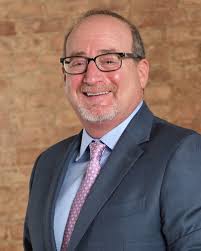Building Businesses in Aftermarket Designer Merchandise: ShopWorn CEO Richard Birnbaum (Part 1)

If you haven’t already, please study our Bootstrapping Course and Investor Introductions page.
Richard has built several business in the “shopworn” designer merchandise segment. Learn more about the business through his journey.
Sramana Mitra: Let’s start at the very beginning of your journey. Where are you from? Where were you born, raised, and in what kind of background?
Richard Birnbaum: I grew up in Brooklyn, New York. I was born into a family of merchants. My father taught me at a young age that everything is about value. Even when we’d go to a diner as a kid, he couldn’t go on raving enough about what a great deal it is they’re offering us. He’d say, “We get a salad. We got Jell-O for dessert.” He instilled in me, at an early age, that it’s all about value and giving the customer a great deal.
I have been in the off-price fashion industry for the last 25 years. Prior to that, I started off as a men’s suit buyer. That was back in the 80’s. Back in my mid-20’s, I was traveling all over the world as a buyer. I was in Italy, going to the fabric mills, buying the fabric, and then sending them to Eastern Europe for cut, make, and trim. This was when Eastern Europe was still behind the Iron Curtain.
From that, I ended up going into business in 1987. It was an opportunity that I had from the Eastman Kodak company. This was when Kodak was still a force to be reckoned with. I went into business. I had a contract from Eastman to develop currency trade activities. They were interested in trade that wasn’t traditional trade.
The way that works, for example, was that Kodak had an import company in Argentina called Kodak Argentina that is wholly owned by the company. The company would import film from the United States. Argentinians didn’t have convertible currency. They couldn’t trade the dollars in Argentina to send the money back to Rochester, New York for the film.
So Kodak had the idea to develop a non-traditional export. This way, a made-in-Argentina product could be sold in the United States, collect the dollars, bring the dollars back to Argentina, pay in local currency, but then export those dollars back to the United States to pay for the film. In essence, currency trade was about being a good citizen of the company that was hosting your business.
Through Kodak, I saw the possibilities in non-traditional trade. I realized how companies like Johnson & Johnson or Duracell were all playing the game of exporting the product from Latin America to the United States and Europe, essentially creating a gray market.
It’s no different than if you walk into a discount drugstore and you’d see a Johnson & Johnson baby shampoo and the packaging would be in Portuguese. You would look at the back of the label, it would say, “Johnson & Johnson Brazil.”
That opened up my eyes to gray market and non-traditional trade. Ever since I went into business in ‘87, I was in the close-out business and the gray-market business in fashion products. That led me into the Watch and Jewelry business, which was a natural fit. My brother and I have been long-time partners.
This segment is part 1 in the series : Building Businesses in Aftermarket Designer Merchandise: ShopWorn CEO Richard Birnbaum
1 2 3 4 5 6
Featured Videos
Can 1M/1M Help Me Raise Money?
How Does 1M/1M Democratize Entrepreneurship Education?
How Does 1M/1M Democratize Management Consulting?
When Is The Right Time To Join 1M/1M?
Can 1M/1M Help Me With Business Development?
Can 1M/1M Help Me With Market Sizing?
Can 1M/1M Help Me Validate My Product?
Will I Have Private 1-on-1 Sessions In 1M/1M?
How Does 1M/1M Help Entrepreneurs Connect With Silicon Valley?
Mentoring or Consulting?
Why Does 1M/1M Charge $1000 a Year?
Why Does 1M/1M Partner With Local Organizations?
Why Don\’t Mentoring Networks Work?
Why Is It Important To Study With 1M/1M Now?
Dan Stewart Story
Vikrant Mathur Story
